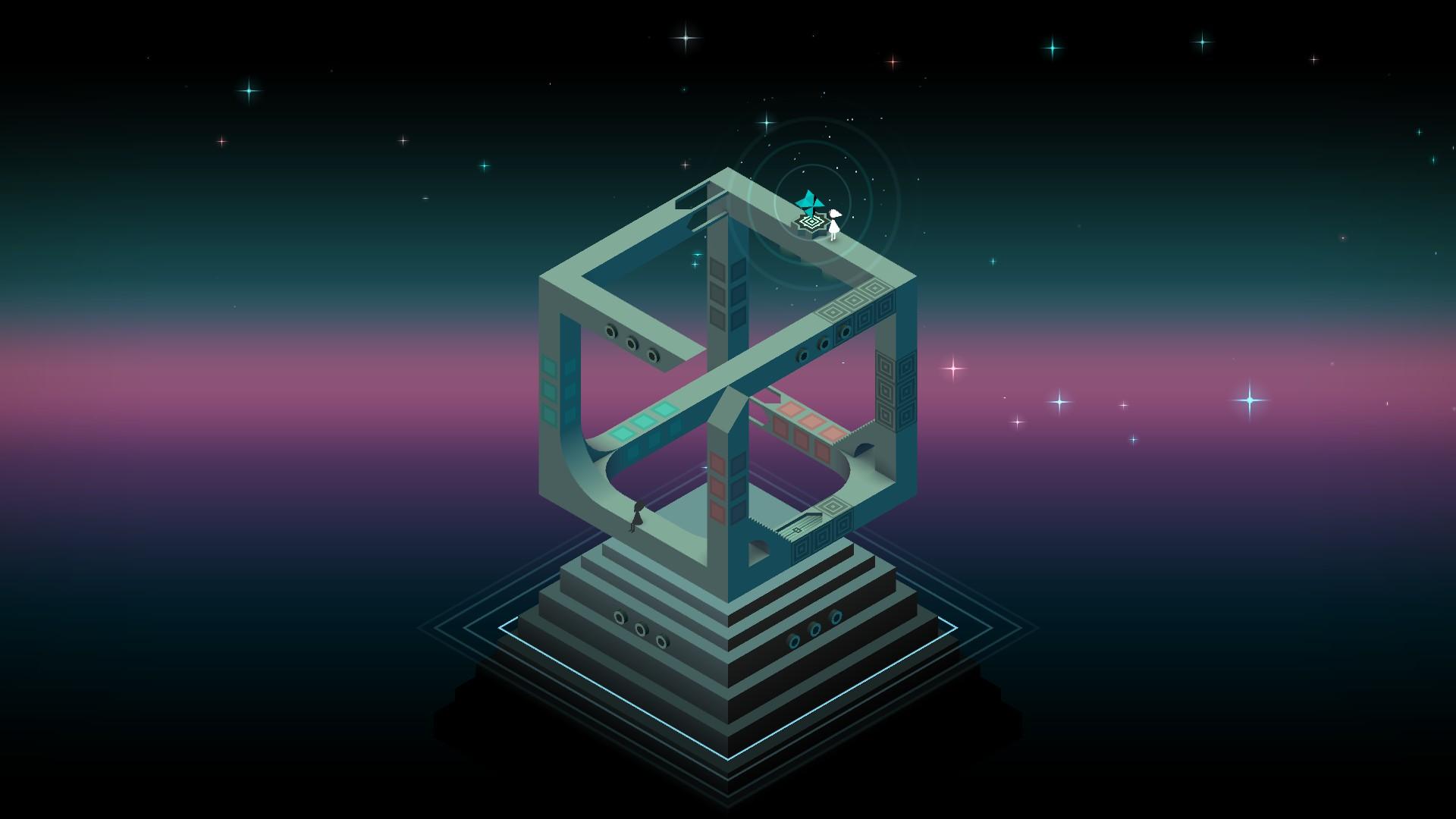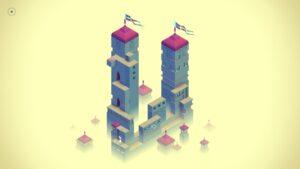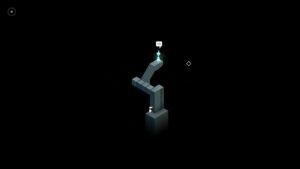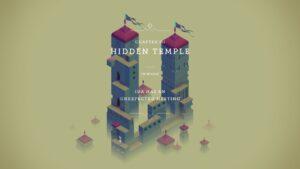For this week’s critical play, I played Monument Valley, a game developed by indie studio Ustwo games initially for iOS and Android, but I chose the “Panoramic version” (PC port) on Steam for my playthrough. Monument Valley is intended for a wide audience given its relatively easy difficulty and short game length. My playthrough can be found here: https://youtu.be/8Y6WFMYMWg8. Despite its lack of difficulty, simple mechanics, and easy-to-understand concepts, Monument Valley beautifully encapsulates and radiates player satisfaction through the challenges they complete, clearly emphasizing fun, playability, and storytelling over game balance. This mirrors the lessons discussed in class 6A and 6B by Anthony during his game balance lecture. Of course, this is also heavily helped by the beautiful art style and sound design, one of the first things I noticed and that stuck with me throughout my time playing Monument Valley.
While clicking and dragging handles, grips, and blocks are part of Monument Valley, I would argue the main mechanic of the game is perspective. The camera for each stage is set in a fixed isometric perspective, simultaneously viewing at most three different faces of a puzzle stage.
Picture clearly showing the isometric perspective of Monument Valley stages
This means the camera never moves from its position. Instead, players are meant to interact with the world that holds Princess Ida, the main character of the game, to navigate her to various objectives within the game. These objectives are clear, but not obvious. For example, many open doors, buttons, and pedestals can only be found by rotating the puzzle as seen during minute 58 of my playthrough. Due to this design choice, this means that even finding the objective, rather than getting to the objective, can already invoke a sense of accomplishment within the player. I routinely felt these small senses of achievement during my playthrough. Every time I was able to progress Ida through a mechanic I recently learned or used previously, I was ecstatic. I knew I was progressing towards my goal, but there was never a time I felt significantly frustrated. Even on longer chapters like chapter 10, which required the completion of three separately unique puzzles (four if you count the base stage itself), the constant sense of achievement kept me wanting to finish Ida’s story. Simultaneously, some small design choices also significantly improved quality of life for the player. When the player hovers over an interactable, it lights up, signaling that it is able to be interacted with.
Highlighted interactable in a level
Interestingly, Monument Valley tells a beautiful story while refraining from intense character-to-character dialogue. The only dialogue that is delivered is by the blue spirit that Ida meets in the caves.
Blue spirit with dialogue bubble
This is done through level names and descriptions, usage of color, perspective, and sound. I would love to learn more about how this process was done for the purpose of our own game design, Flatline, as one of our main current challenges is incorporating puzzles into our stories seamlessly.
A beautiful conveyance of a redemption arc for Ida
Name of Chapter 3, “Ida has an unexpected meeting”
This method of story-telling, especially combined with the evolution of the puzzles, signifies the ever-changing world of Monument Valley. For example, chapter 6 titled “Ida meets the totem, a friend” introduces a new character and mechanic: the totem. The totem is a large pole of which Ida can ride on, and the totem helps Ida get to places she otherwise would not have been able to reach. The introduction of the totem helps the game designers introduce new puzzles that include manipulating verticality and Ida’s position without breaking the current rules they set. (Most interactables cannot be interacted with if Ida is standing on them.) I grew attached to the totem, as it was utilized heavily throughout the chapter. When I lost the totem after it followed Ida into the deep ocean, I was desperately looking for ways to save it. This attachment to a character that was only introduced for a short period of time is something Flatline is also helping to incorporate into its story.
Despite all the high praise I gave Monument Valley, there are also many improvements that I hoped Ustwo studios implemented in Monument Valley 2. A specific PC port bug occurs when an interactable which rotates an item is held for too long, causing the interactable to uncontrollably spin out. Related to level design, I intuitively began to look for objectives because of my previous experience with other games that involved buttons and open doorways. However, someone who may be new to the puzzle and adventure game genre may not understand that these are the objectives. Having an integrated onboarding process may help with this issue. Overall, however, I was extremely satisfied playing Monument Valley.









